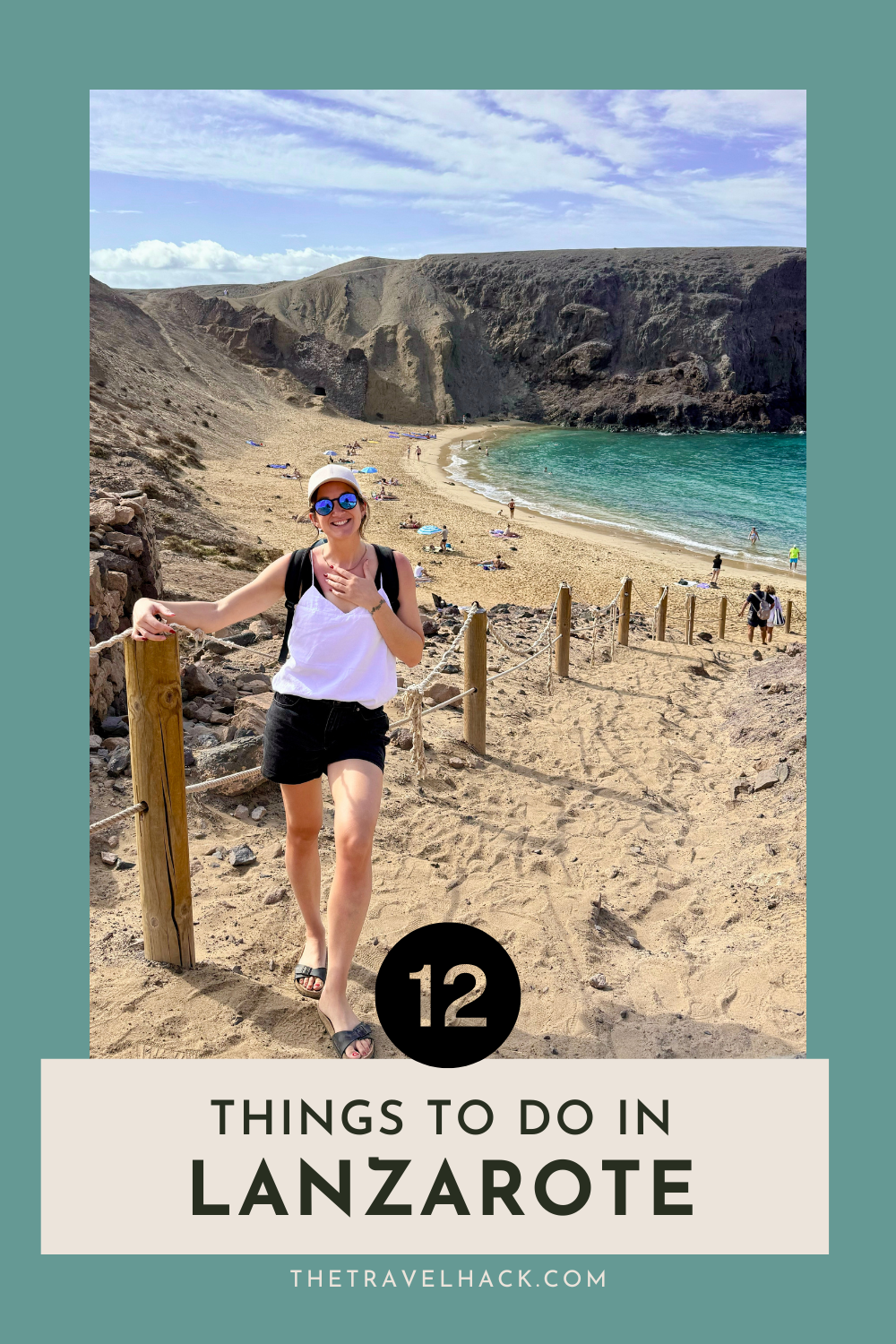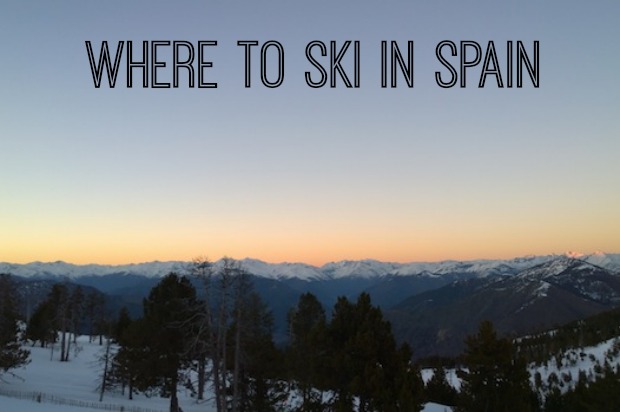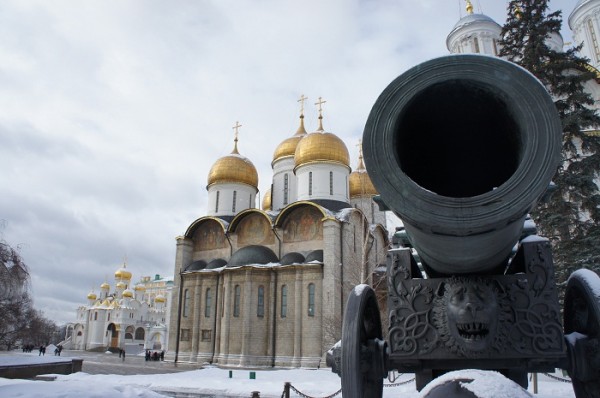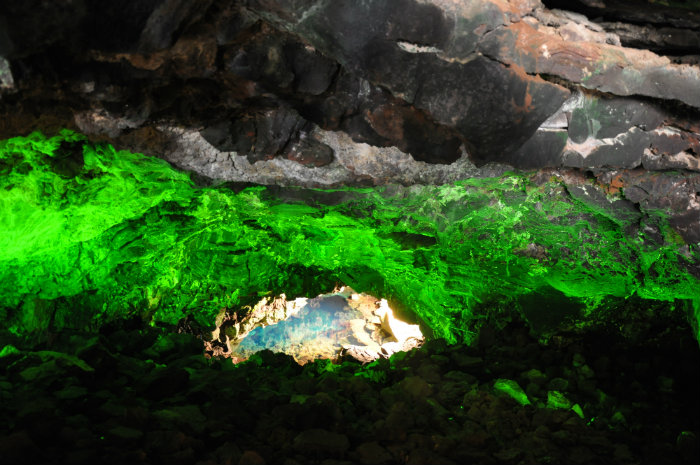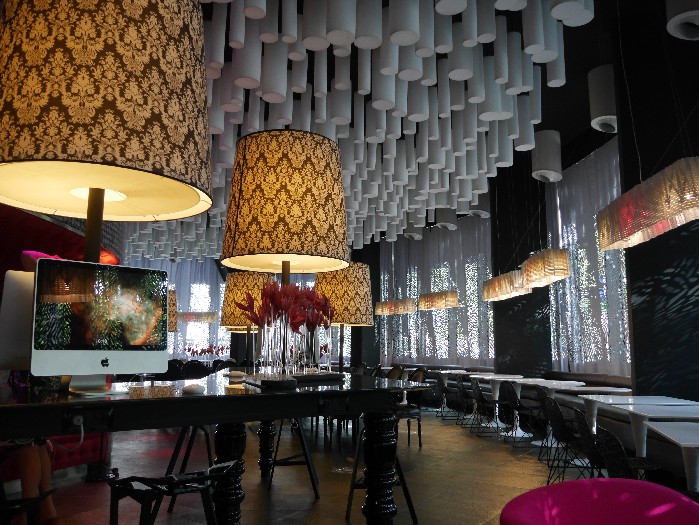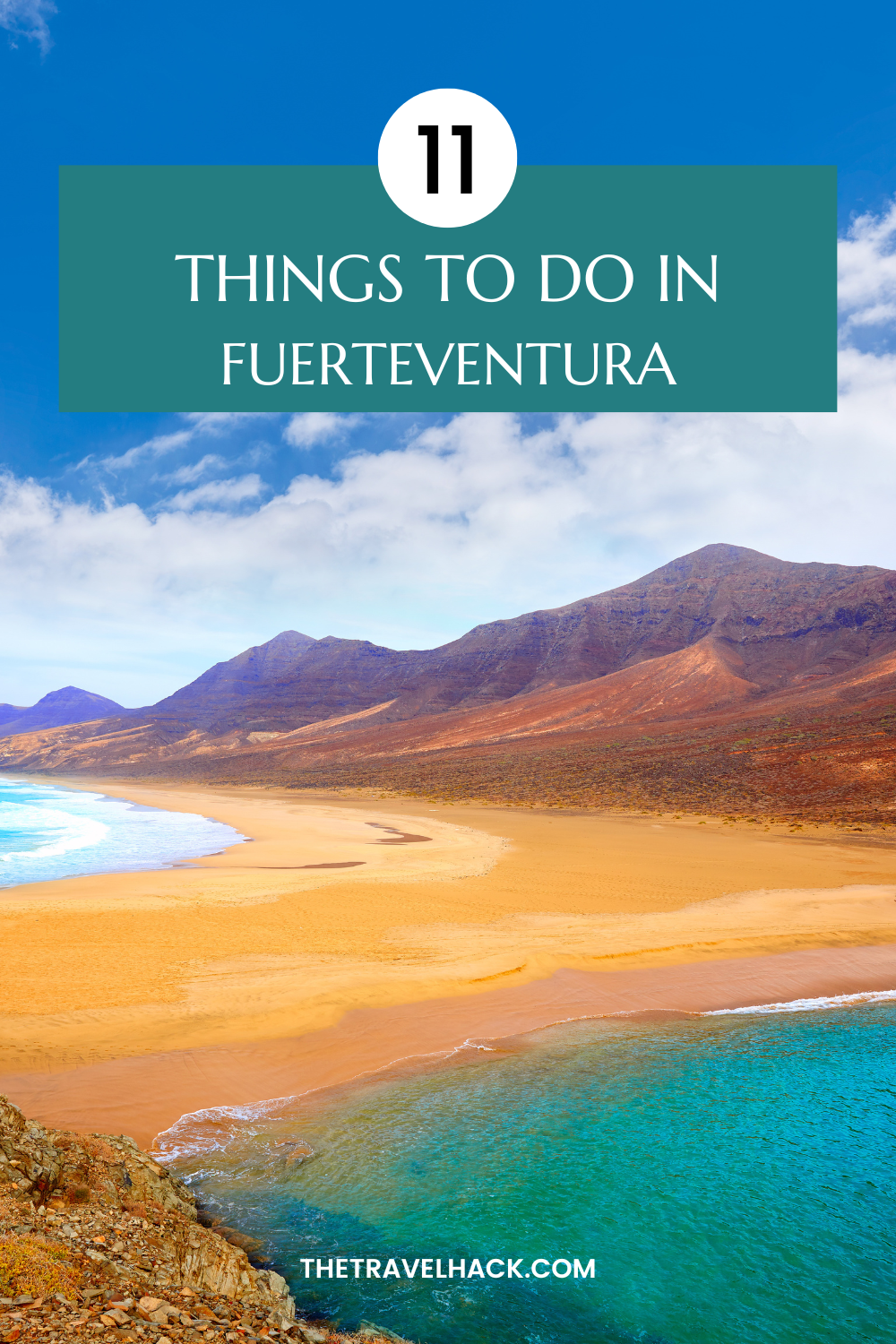I’ve been to Lanzarote eight times over the last few years! I just love it for budget winter sun and haven’t found anywhere better!
The weather in Lanzarote is gorgeous, the beaches are beautiful (my personal fave of the Canary Islands), the flight isn’t too far from the UK and there are so many amazing things to do in Lanzarote!
Not only that but it’s cheap! Flights with Ryanair start from £14.99.
April and October are my favourite times to visit Lanzarote because you’re almost guaranteed gorgeous weather while it’s pretty drab in the UK.
Costa Teguise is my favourite area to stay but I highly recommend hiring a car to get out and see the island. Car hire is really cheap and it’s a very easy island to drive on.
Lanzarote Quick Facts
- Best time to go: April or October
- How to get there: Find flights on Skyscanner from as little as £14.99 each way.
- Where to stay: Airbnb is your best bet for budget apartments
- Car hire: I recommend Zest Car Rental
- Area to stay: Costa Teguise
- Best beach/day out: Playa de Papagayo
I’ve got a whole post about hiring a car in Lanzarote if you need some help there!
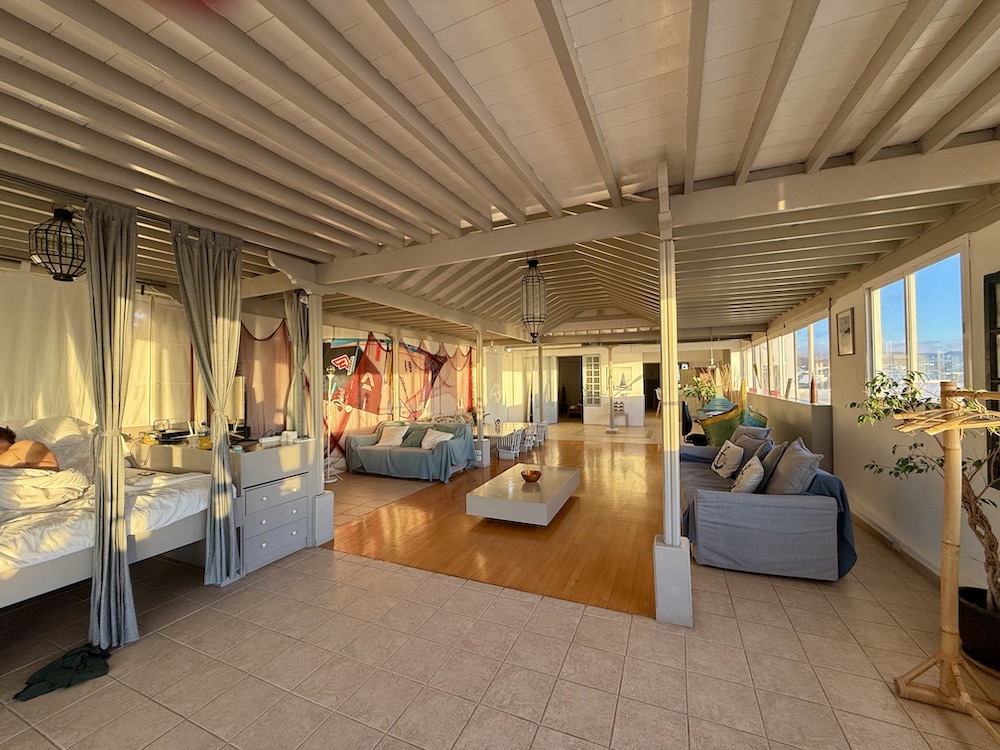

Now let’s get onto the fun bit… the best things to do in Lanzarote…
12 things to do in Lanzarote
Here’s a quick list of 12 of my favourite things to do in Lanzarote. I’ve gone into more detail about them all below.
- Playa de Papagayo
- Mirador del Río
- Jameos del Agua caves
- Arrieta Village
- Cactus garden
- Timanfaya National Park
- Playa Blanca Natural Swimming Pools – Los Charcones
- Lagomar Museum
- Kamezi Deli and Bistro for sunset drinks
- Las Griestas
- Playa de Famara
- Caleton Blanco
Playa de Papagayo
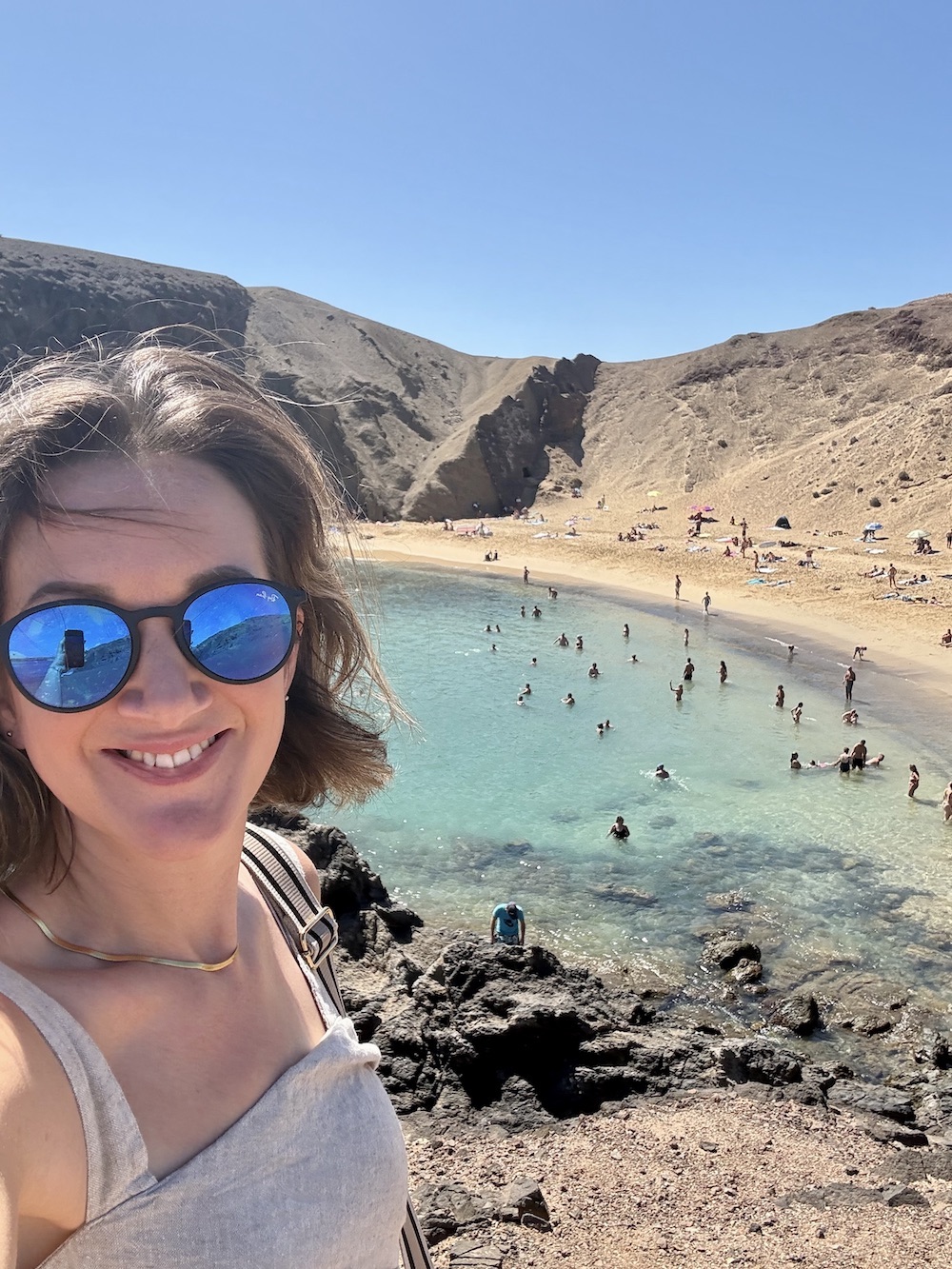
If you want to get away from the touristy beach feel of the resorts then one of the best things to do in Lanzarote is visit Playa de Papagayo which is a world away from the Brits abroad vibes.
Playa de Papagayo is said to be one of the most famous beaches in Lanzarote but, honestly, I think it’s a bit of a hidden gem because I don’t know anyone who has been there.
Located within the Los Ajaches Natural Park on the southern coast, Playa de Papagayo is home to a few beaches with golden sand, crystal-clear turquoise waters, and unspoiled natural beauty.
The most popular beach is a crescent shaped, sheltered bay so it’s calm and protected and it’s ideal for swimming and snorkelling. The surrounding volcanic cliffs frame the beach with dramatic scenery so it’s unlike anywhere else in Lanzarote. You’ll have incredible views across the Atlantic Ocean and you may even see neighbouring islands like Fuerteventura.
It’s a 2-mile drive across a bumpy, rocky dirt road to access Playa de Papagayo. Half way up the road you need to pay a small fee to enter the national park (it was 3 euro in October 24). You can pay by card.
There are minimal amenities but there is a nice bar overlooking the main beach. It’s a perfect spot for those seeking relaxation and a more laid-back beach experience, away from the busy resorts.
If you don’t have a car, you can take a day trip to Playa de Papagayo on a catamaran. The company will pick you up and you’ll sail to the beaches and then have lunch on the boat and time to swim and snorkel. It looks amazing! You can also do a kayaking trip which leaves from Playa Blanca.
Mirador del Río
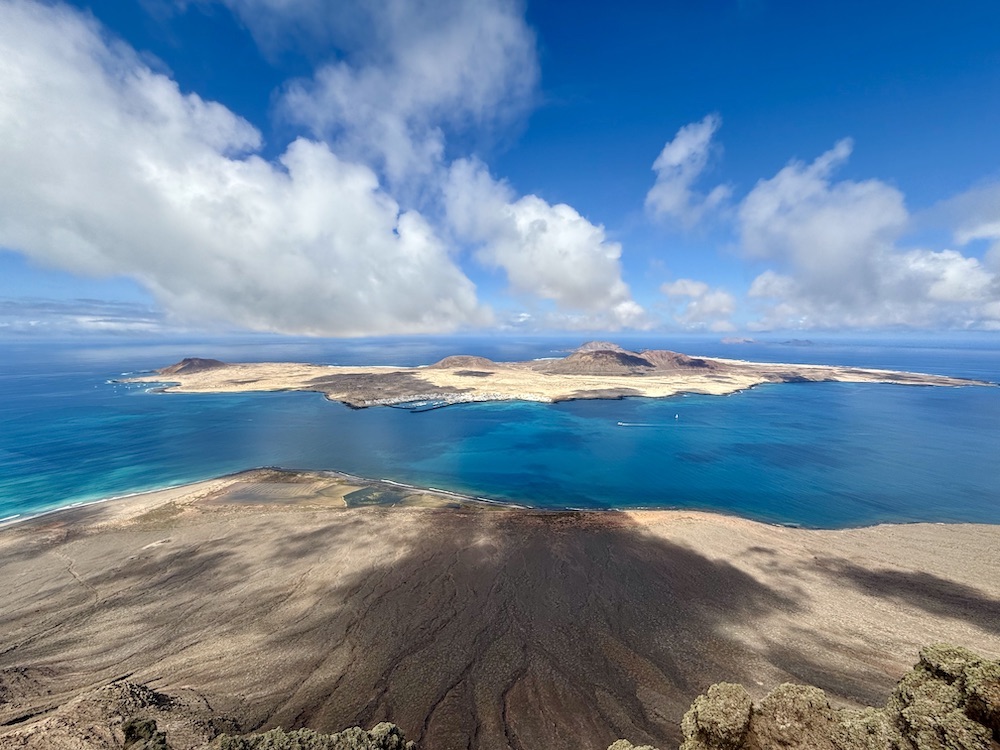
Mirador del Río is a breathtaking viewpoint in northern Lanzarote, Spain. Designed by the renowned local architect and artist César Manrique in the 1970s, the building is seamlessly integrated into the rugged volcanic landscape, blending architecture with nature.
Mirador del Río is 475 metres above sea level so the views are incredible. It overlooks the small island of La Graciosa, part of the Chinijo Archipelago, as well as the azure waters of the Atlantic Ocean and the stunning Risco de Famara cliffs.
The viewpoint is ingeniously carved into the rock, with large, curved windows that frame the landscape like natural paintings. Inside, there’s a café, a gift shop, and a rooftop terrace for unobstructed views.
I recommend having a drink in the cafe, otherwise it’s just a quick pit stop to admire the view.
For an even more incredible way to enjoy those views, there is a sailing trip you can do around the island of La Graciosa which I’d love to do next time.
Jameos del Agua caves
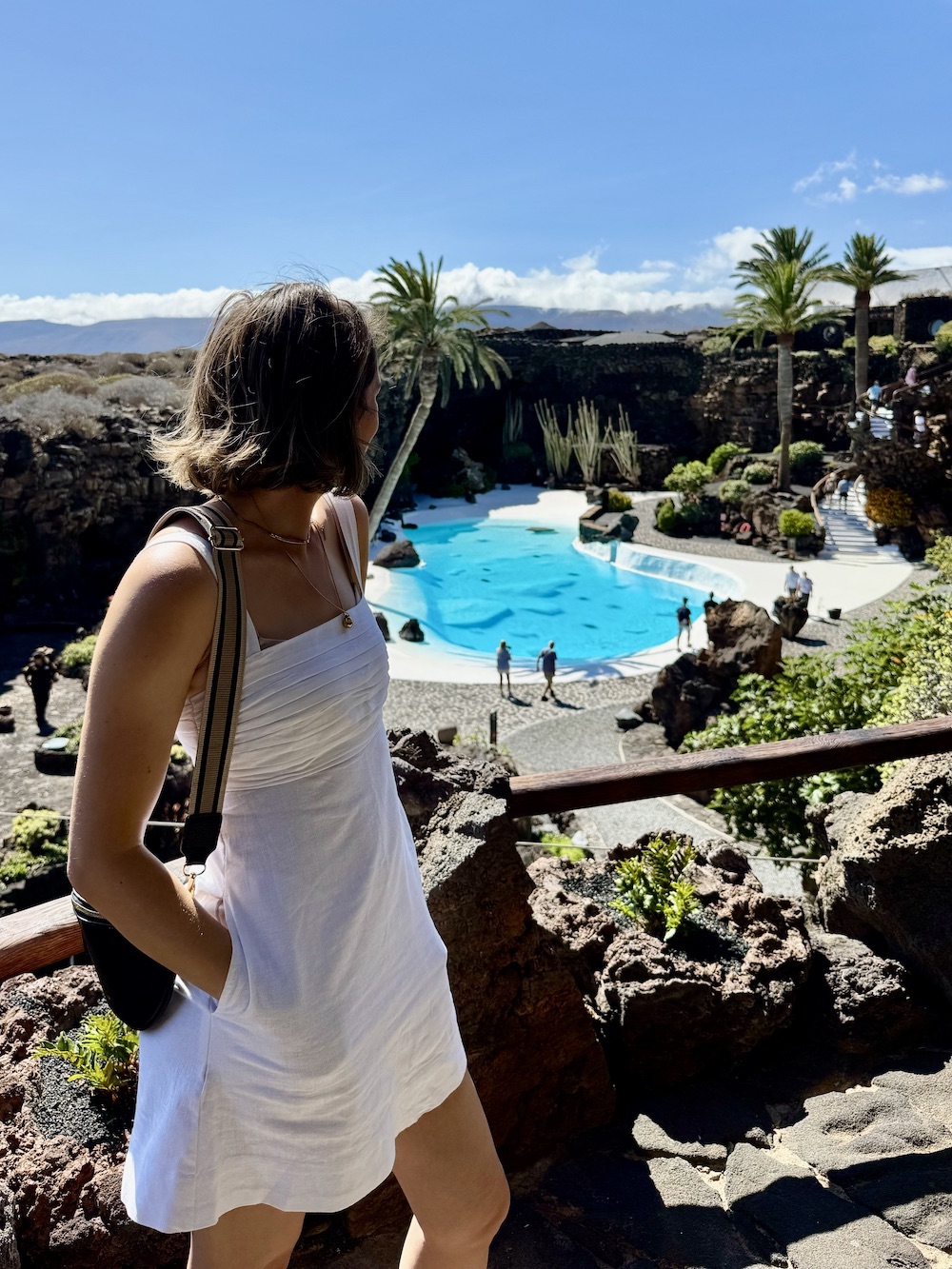
Jameos del Agua is a stunning, volcanic cave complex that’s been made into a cultural and leisure centre by the renowned artist and architect César Manrique (the same guy who created Mirador del Río).
Jameos del Agua seamlessly blends natural beauty with artistic innovation. The site originates from a series of lava tubes formed by volcanic activity, featuring impressive stalactites and stalagmites that create an otherworldly atmosphere.
At the heart of Jameos del Agua is an underground lagoon where you’ll find unique, blind albino crabs native to Lanzarote. This serene body of water reflects the cave’s natural formations, enhancing the mystical ambiance.
The main auditorium, designed to utilise the cave’s excellent acoustics, hosts concerts and performances, offering visitors a memorable sensory experience. Additionally, there are a couple of different restaurants and cafés that provide refreshments while allowing guests to enjoy the serene but mystical atmosphere. There was this magical, hushed atmosphere while we were there, almost like being in a church. I’ll admit that our food in the cafe was terrible but the setting was incredible so next time I’d just have a drink!
There’s a beautiful swimming pool at Jameos del Agua but unfortunately you’re not allowed anywhere near it! It also includes exhibition spaces for art displays, making it a vibrant cultural hub.
Jameos del Agua caves are one of the best things to do in Lanzarote if it’s raining or cloudy as I don’t think the weather would change your experience here.
If you don’t have a car, this looks like a great day tour that visits Jameos del Agua as part of a bigger trip.
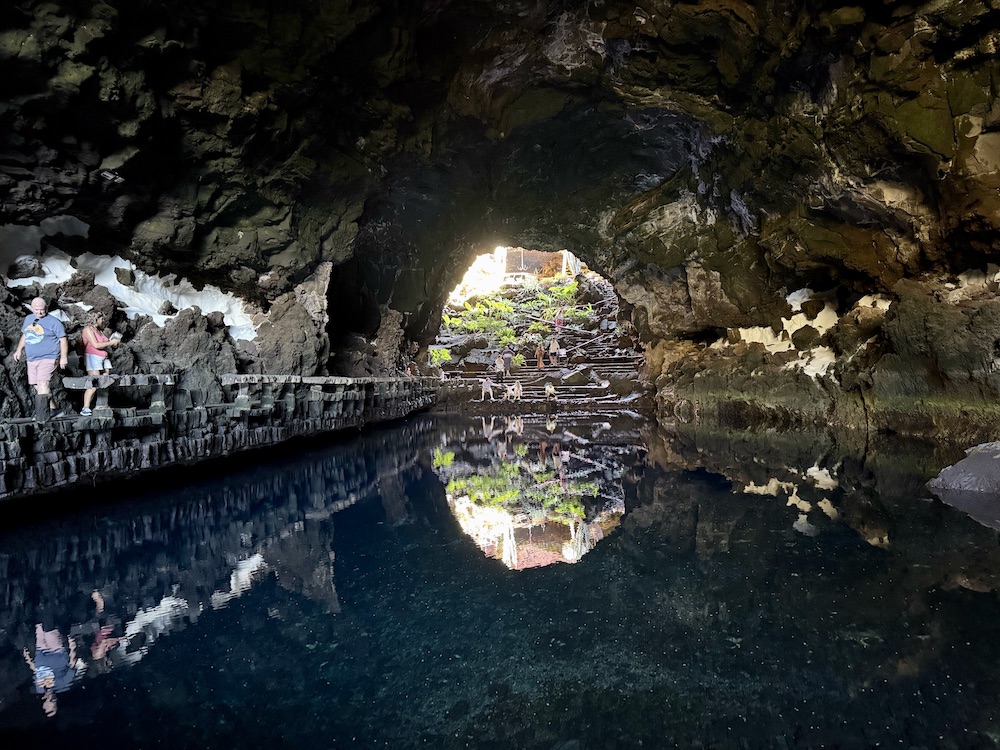
Arrieta Village
Arrieta is a charming coastal village located in the northeastern part of Lanzarote. If you’re looking for things to do in Lanzarote with a more traditional, authentic and serene vibe then this is it.
Arrieta is known for its laid-back atmosphere and traditional Canarian charm that’s a world away from the island’s more commercialised tourist areas.
The village is famous for its unspoiled beaches, particularly Playa de la Garita, a golden sandy beach with calm, clear waters, perfect for swimming and surfing. Visit the small port where colourful fishing boats bob in the water and you’ll find some excellent seafood restaurants around here too.
Cactus Garden
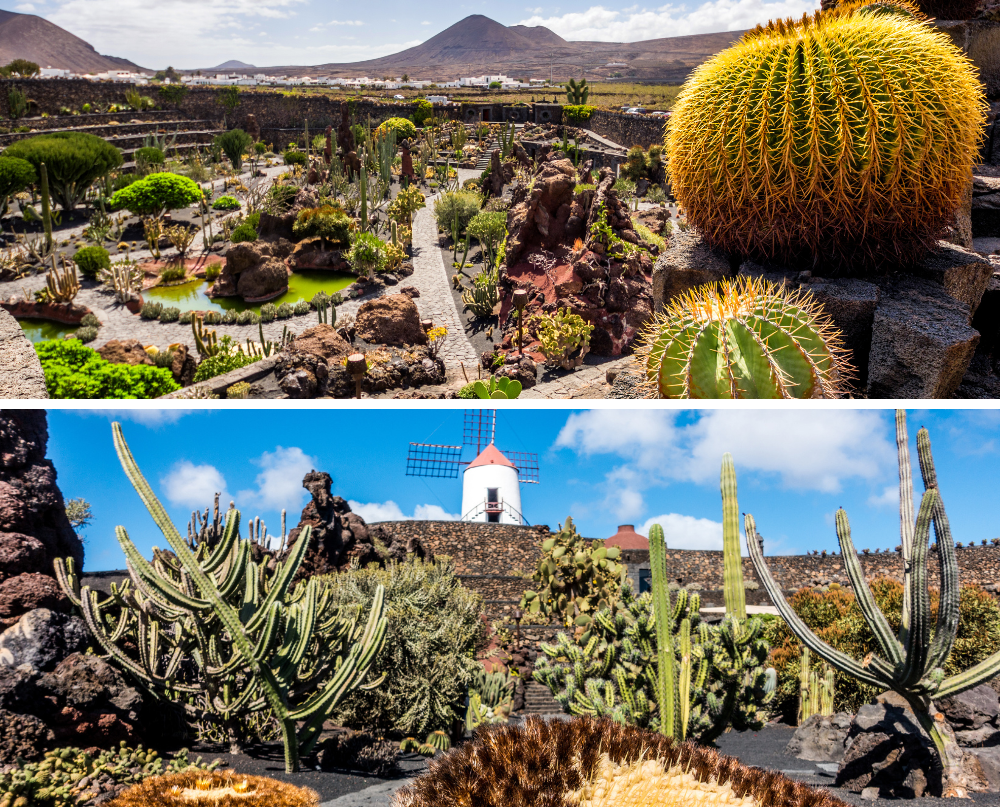
The Cactus Garden (Jardín de Cactus) is on the northeastern part of the island is one of the best things to do in Lanzarote for plant lovers! Designed by local artist César Manrique (yes, him again!) the garden is one of his most celebrated creations, seamlessly blending art with nature.
The Cactus Garden is home to over 4,500 cacti from more than 450 species, sourced from regions around the world, including the Canary Islands, Africa, and the Americas. The plants are arranged in a circular, amphitheatre-like layout so you can walk among the towering cacti and observe their fascinating shapes and textures up close. In the centre, a restored traditional windmill adds to the picturesque setting, reflecting Lanzarote’s agricultural heritage.
This tour visits the Cactus Garden as well as the other attractions designed by Cesar Manrique.
Timanfaya National Park
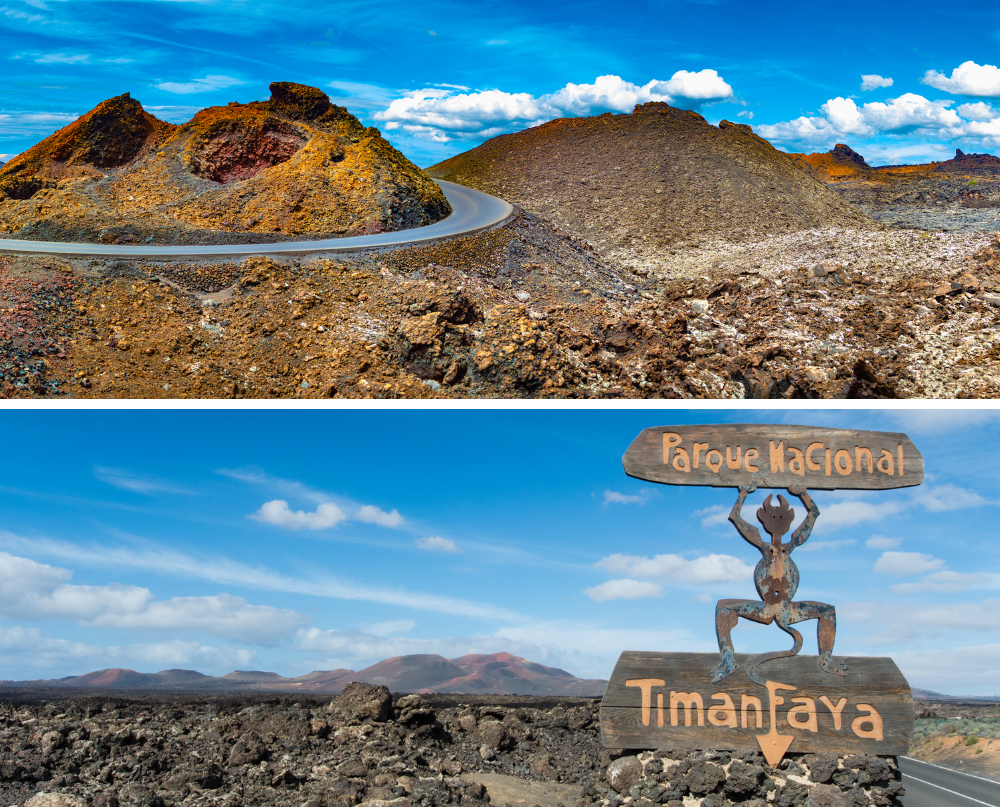
Timanfaya National Park is a breathtaking volcanic landscape that’s going to feel like you’ve stepped into another world. Covering about 51 square kilometres, the park is renowned for its dramatic terrain, shaped by volcanic eruptions that occurred between 1730 and 1736, and again in 1824. These eruptions left a surreal landscape of lava fields, craters, and volcanic cones, giving the park a unique, almost lunar appearance.
Timanfaya is home to the famous Montañas del Fuego (Fire Mountains), where geothermal activity is still visible today. Park rangers perform demonstrations showing the intense heat just beneath the surface—dry bushes burst into flames, and water poured into the ground shoots up as steam geysers, illustrating the ongoing volcanic activity beneath the earth.
I’ve found this website to be the best in terms of practical information on how to visit Timanfaya National Park.
Playa Blanca Natural Swimming Pools – Los Charcones
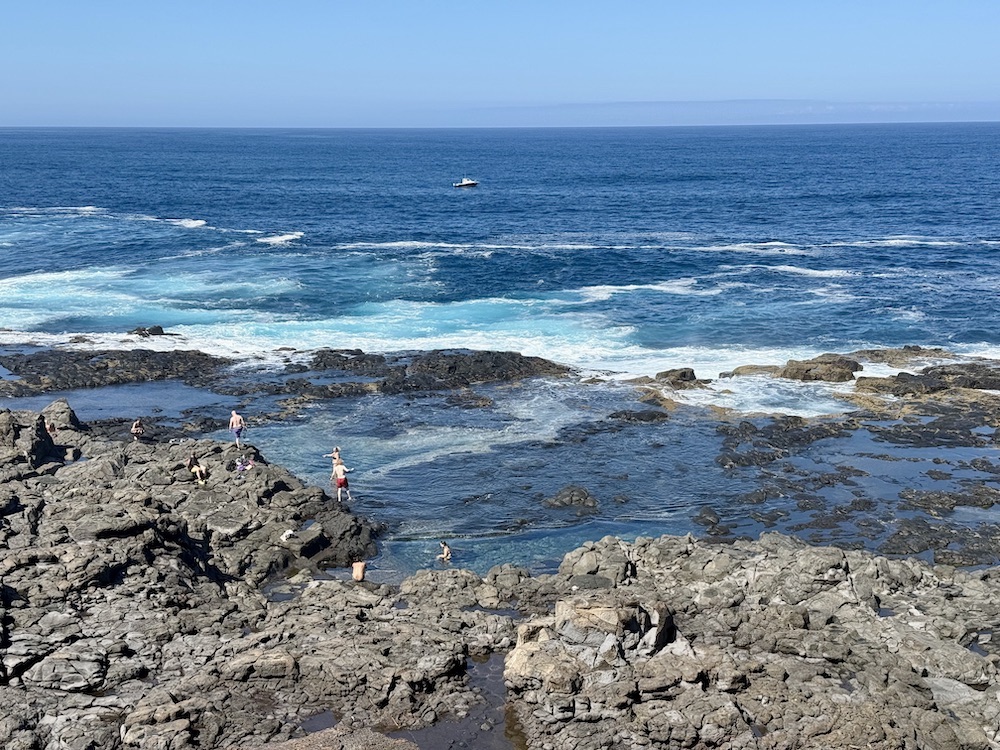
The natural swimming pools of Playa Blanca are another place that’s a world away from the touristy resorts and this is one of the things to do in Lanzarote if you’re looking for adventure!
These natural pools are formed by volcanic rock along the coastline, creating sheltered, calm waters perfect for swimming and relaxing. Unlike sandy beaches, the pools provide a unique, rugged environment where you can take in the surrounding views of the Atlantic Ocean while enjoying crystal-clear waters.
To access the Playa Blanca Natural Swimming Pools I recommend putting ‘Los Charcones’ into Google Maps and this will lead you to some off road parking. Depending on the car you’re driving, you may wish to drive to the natural pools following a dirt track. Personally, I wasn’t sure my little hire car was up to it so I opted to park up and walk. It was about a 2km walk so make sure you’ve got plenty of water and a hat! You’ll see an abandoned hotel so head to the hotel and the pools are right there. You can walk along the coast to discover more!
Lagomar Museum
I’m not normally a museum fan (especially on holiday!) but the Lagomar Museum is well worth visiting. It’s another one that was originally designed by César Manrique but this one was later completed by architect Jesús Soto in the 1970s. So it’s got the usual blend of art, nature, and history as it shows off the natural beauty of the volcanic caves and cliffs.
Lagomar was once famously owned by Hollywood actor Omar Sharif, who is said to have lost it in a card game shortly after purchasing it. The museum is filled with winding pathways, hidden grottoes, lush gardens, and stunning views of the surrounding volcanic landscape.
The design of Lagomar uses Lanzarote’s distinctive and unique volcanic features, using natural caves as living spaces and creating a labyrinth of rooms, terraces, and courtyards that flow seamlessly into the rocky environment. The museum houses art exhibitions and cultural events, showcasing works from local and international artists.
There’s also a bar and restaurant so you can relax and enjoy the magical ambiance of the space.
You can pre-book tickets to Lagomar Museum here.
Kamezi Deli and Bistro for sunset drinks
Kamezi Deli and Bistro is an incredible restaurant that offers a 12 course tasting menu so foodies are going to love this. Just be aware that it’s VERY expensive. If you’re here for the atmosphere and views, head up to the ocean view terrace where guests can have cocktails in beautiful pods overlooking the sea.
You might be interested to know that this place also has beautiful villas at Kamezi Boutique Hotel Villas. It’s on the wish list!
Las Griestas
Las Grietas is an incredible rock formation near Montaña Blanca. The name “Las Grietas” translates to “the cracks,” which perfectly describes the series of deep fissures that cut through the volcanic rock.
You’ll find narrow, towering crevices which were formed by ancient lava flows, creating dramatic walls of solidified basalt. You can walk between the tall, jagged rock faces which are so dramatic and make a great place for photos!
The hike to Las Grietas is relatively short and accessible. It isn’t a massive area to visit which makes it easy and it feels like a real adventure thanks to the labyrinth-like corridors created by the volcanic fractures. If you visit at sunrise or sunset the light will be dazzling through the narrow spaces, creating a mystical atmosphere that makes it one of the most magical things to do in Lanzarote.
Playa de Famara
Playa de Famara is a stunning, rugged beach in the north of Lanzarote. It’s unlike the gentle beaches around many of the resorts and has more o a wild vibe. It’s popular with surfers, kitesurfers, and windsurfers thanks to the waves and wind. This isn’t the place for a gentle paddle but it’s definitely worth visiting to see a different side to Lanzarote.
The golden beach stretches for almost 6 km and is framed by the towering cliffs of Risco de Famara, which rise majestically in the background. There are sweeping views across the Atlantic Ocean which add to the beach’s wild and rugged appeal.
There isn’t any large-scale development here so there’s a low-key, untouched vibe and it’s a really beautiful place to go to watch the sunset. The nearby village of Caleta de Famara has a few restaurants so come for the sunset and stay for dinner!
Caleton Blanco
If the wild waves of Playa de Famara aren’t your thing then head to Caleton Blanco, which is also in the north of Lanzarote near the village of Órzola and offers a much gentler beach experience.
The beach is known for its striking contrast of white sand and black volcanic rocks. The beach is part of a series of small coves and shallow lagoons formed by volcanic rock, creating calm and crystal-clear waters ideal for swimming and paddling.
The gentle slope of the beach makes Caletón Blanco a great spot if you’ve got young children, as the shallow water creates natural pools that are safe and warm for swimming.
Caletón Blanco is less developed than other beaches in Lanzarote, so there aren’t many amenities and you’ll need to bring your own food and drink. But this is part of the appeal and it’s such a gorgeous place to relax in a quiet, natural environment. The nearby fishing village of Órzola does have restaurants and facilities, so I’d recommend going there for lunch after a beautiful morning at the beach.
